New on Our Shelves
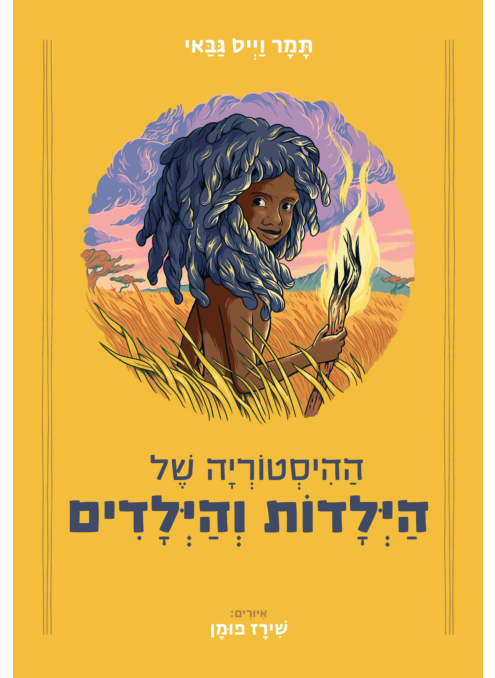
ההיסטוריה של הילדות והילדים
תמר וייס גבאי
2024
איך חיו פעם ילדות וילדים? על מה הם חלמו, במה האמינו?
מה צייר אילי על קירות המערה שבה הוא חי, ומה ציירה מיי־לינג על הנייר שהמציאו בתקופתה? אילו צעצועים היו לליויה ברומא העתיקה, ומה חשב אור־ממה בדרך לבית הספר הראשון בעולם? האם תמיד חגגו לילדים יום הולדת, ומי היו הילדים הראשונים בהיסטוריה שלבשו תחתונים?
ההיסטוריה של הילדות והילדים מפגיש אותנו עם חיי ילדים ברחבי העולם, מלפני מיליון וחצי שנים ועד הילדים והילדות הקוראים בספר, שמוזמנים לכתב בסופו גם את ספורם. כל פרק הוא ספור על ילד או ילדה, מפגש עם פיסה מחייהם. יחד הם פאזל מרתק המציע לילדים להכיר דרכי חיים מגוונות מהעבר הרחוק ועד להווה, וממחיש להם את היותם חלק מההיסטוריה.
ההיסטוריה של הילדות והילדים הוא פרי דמיונה של הסופרת תמר וייס גבאי, כלת פרס ברנר לספרות ופרס דבורה עומר לספרות ילדים, שביססה את כתיבתה על איסוף מידע היסטורי רב ועיבודו. ביצירה זו, כמו ביצירות נוספות פרי עטה, היא בוחנת את יחסי האדם עם סביבתו בזמן ובמרחב, ומספרת אותם מחדש. שירז פומן העניקה פנים לגיבורי הסיפורים, ופרטי פרטים המכניסים אותנו לעולמם

Two Bronze Age Cemeteries in the Qirya Quarter of Tel Aviv
Eliot Braun and Edwin C.M. van den Brink
2022
The excavation report is devoted to two Bronze Age cemeteries in Tel Aviv, which allows for a very significant contribution to an understanding of ancient activity in the Qirya quarter prior to the development of the modern city of Tel Aviv. The excavations revealed two distinct chronoculturally complexes of tombs, one a burial ground of the Early Bronze Age, the other a cemetery of the Intermediate Bronze and Middle Bronze Ages. Their excavation and associated finds, as well as objects from nearby tombs from earlier excavations, are the subjects of this report. The Early Bronze Age cemetery of the Qirya Quarter in Tel Aviv was a burial ground of uncertain size that indubitably covered a much larger area than has been excavated. Definitively included within its precincts are several quarried cave tombs used for multiple burials and a single, barely-preserved cavity. The evidence clearly indicates these tombs, once quarried, were used for the repose of individuals over a period of at least several generations. Thus, that part of the ridge devoted to mortuary functions may be deemed a formalized cemetery to which numerous people repaired when in need of disposing remains of departed members of their society. Fifty tombs are assigned to the Intermediate Bronze Age. The paucity of excavated settlements of the IB period in the coastal plain means that our understanding of this period is derived almost exclusively from cemeteries. The excavation of this IB cemetery adds somewhat to the picture of what is believed to have been a rather dispersed IB settlement system. The presentation of the tombs (chs. 1–8) is followed by reports on the anthropological finds (ch. 9), Hellenistic and Roman finds (ch. 10), metal finds (ch. 11), lithic assemblage (ch. 12), beads and pendants (ch. 13), scarabs (ch. 14), shells (ch. 15).

Kinneret II : results of the excavations at Tell el-'Orēme, 1994-2008
Volume 1: The Bronze Age, Iron Age II, Post-Iron Age Periods, and Other Studies
Wolfgang Zwickel and Juha Pakkala (eds.)
2024
Tell el-‘Orēme is a large archaeological site on the northwestern shore of the Sea of Galilee. Excavations of the site by Volkmar Fritz (1938–2007) in the 1980s and 1990s revealed its archaeological importance: Tell el-‘Orēme or ancient Kinneret had been a major city in the Bronze and Iron Ages. Stefan Münger (Bern), Juha Pakkala (Helsinki), Jürgen Zangenberg (Leiden) and Wolfgang Zwickel (Mainz) formed the Kinneret Regional Project in order to restart the excavations and to clarify unsolved problems. Building on Fritz’s results, the Kinneret Regional Project excavated from 2003 to 2008, and concluded that the site’s habitation left remains of at least 13 strata dating from the Chalcolithic/Early Bronze Age to Iron Age II. Remains of human activity predating and postdating these periods were also detected. This publication is the first of two volumes of the renewed excavations since the 1990s. It is thus the final excavation report that includes the results gained by Fritz in the 1990s and the results of the Kinneret Regional Project in the following decade. The volume covers the Chalcolithic/Bronze Age and Iron Age II strata, as well as other remains mainly from later periods. The current volume also contains the publication of some additional archaeological projects on the tell, and special studies on a number of finds and topics related to the excavations, such as stone objects, flints, archaeobotany, and archaeozoology.
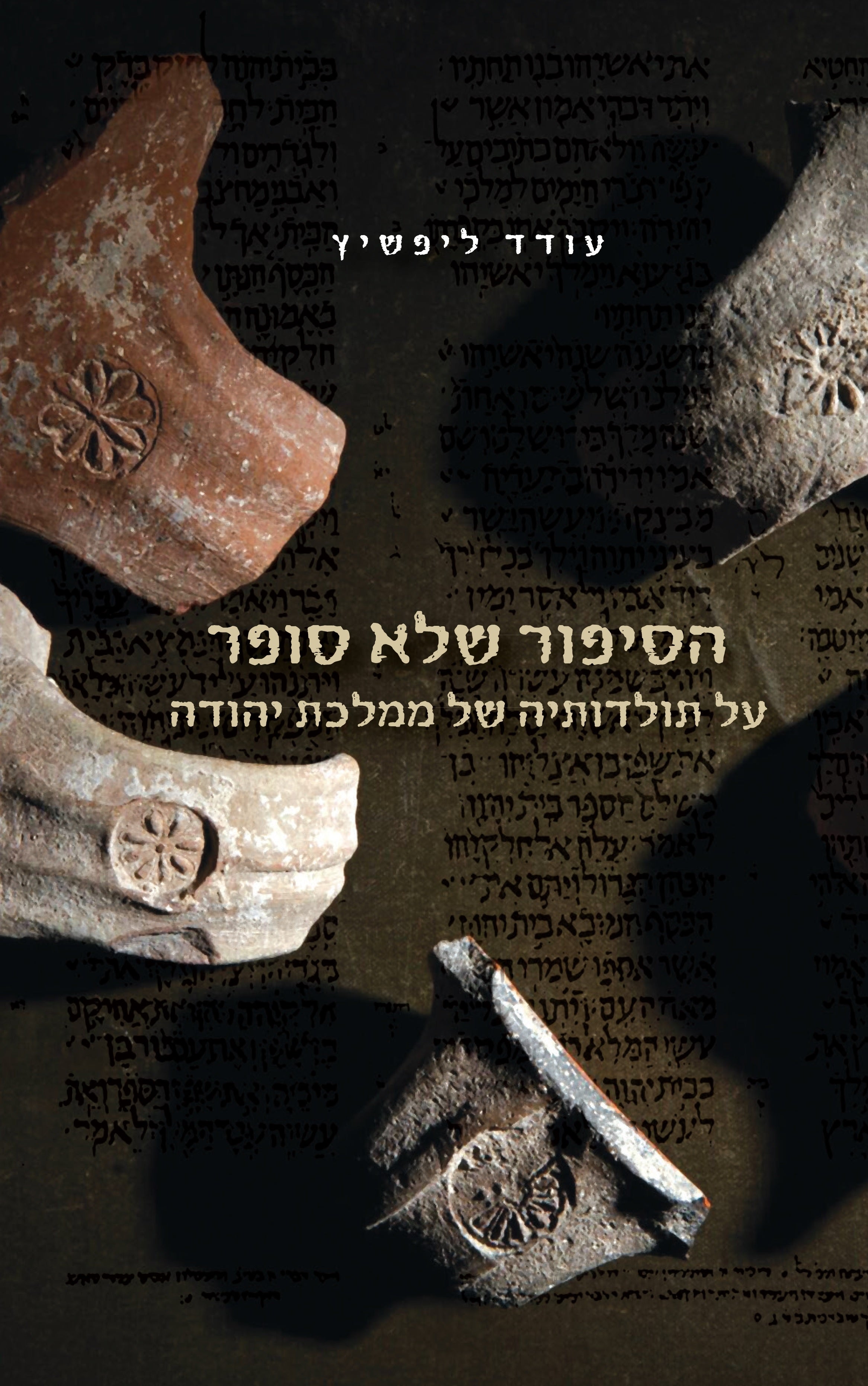
הסיפור שלא סופר על תולדותיה של ממלכת יהודה
עודד ליפשיץ
2024
הסיפור שלא סופר על תולדותיה של ממלכת יהודה נכתב מתוך אהבה גדולה לטקסט המקראי ומתוך סקרנות גדולה אף יותר לגבי מי שכתבו אותו. הספר הוא הזמנה למסע בזמן בעקבות מי שחיברו את התיאורים ההיסטוריים בספרי המקרא, מתוך ניסיון לברר מי הם היו, מתי הם כתבו והיכן. הסיפור שלא סופר על תולדותיה של ממלכת יהודה סוקר את האירועים הבולטים של התקופה ומצביע על ההשמטות המכוונות בסיפור המקראי, ואגב כך חושף את המטרה החינוכית לימודית של הכתוב ואת קהל היעד שלו. הוא מוכיח שוב ושוב כי המקרא לא מבקש לספר מה באמת התרחש בעבר, אלא להאיר לדורות הבאים את ההווה על רקע התרחשויות העבר, ובאמצעות זאת ללמד לקח לגבי דרך ההתנהגות הנכונה של הקוראים כדי להבטיח עתיד טוב יותר להם ולעם כולו. כך צריך לקרוא את המקרא וכך יש להבין אותו.

Tell es-Safi/Gath III: Studies on the Early Bronze Age, Part 1
Itzhaq Shai, Haskel J. Greenfield and Aren M. Maeir (eds.)
2023
Tell eṣ-Ṣâfi/Gath Archaeological Project commenced in 1996 and continued until the summer season of July 2021, which constituted the last largescale season of the project. Over the course of 25 years, as excavations, field surveys and various research on the archaeology, history and environment of this site was conducted, numerous publications relating to the project have appeared, including articles, chapters and volumes. Two previous volumes of the final reports have already appeared, dealing with various aspects relating to the site: Tell es-Safi/Gath I (ÄAT 69); Tell es-Safi/Gath II (ÄAT 105). The present, third volume of the final reports, is the first part of a sub-series of the final reports dedicated to the Early Bronze Age remains on the site. In this volume, the three upper levels (E5a, E5b, E5c), which were extensively investigated from 2004 until 2014, are described in detail. Next to the “Stratigraphy of the Early Bronze Age”, chapters are devoted, among others, to the “Lithic Assemblage”, the “Pottery Assemblage”, the “Basalt Ground Stone Objects”, “Isotope Analyses of Domestic Animal”, a “Ritual Domestic Donkey Burial” and “Copper Objects and their Provenance”.
Physical Descriptions, Biometrics, and Eikonographia in Graeco-Roman Papyri from Egypt
Ella Karev
2025
In modern life, an identity document bearing a photograph is an indispensable feature. Yet this connection between physical appearance and legal identity is not as modern as it may seem. In Graeco-Roman Egypt, Greek texts also bore “lexical photographs”: standardised, detailed physical descriptions (eikones) of individuals including height, skin colour, hair texture, the shape of the nose and face, and other identifiers like body modifications and disabilities. For the first time, this book collects the nearly 4000 extant eikones and their role in society, bringing the images of real individuals to life within the everyday biometric system in which they acted, worked, and relied upon for identification.
מרשה בשפלת יהודה: מבט ארכיאולוגי והיסטורי
עמוס קלונר, נילי גרייצר ובועז זיסו
2023
העיר הקדומה מרשה והתל שבמרכזה מצויים בתחום הגן הלאומי בית גוברין-מרשה שבשפלת יהודה, 'ארץ אלף המערות', ושטחם כ-500 דונמים. ב-2014 הוכרז הגן הלאומי כאתר מורשת עולמית מטעם אונסק"ו.
ראשית המחקר של מרשה החל בשנת 1900. משלחת בריטית ערכה חפירות ארכיאולוגיות במרומי התל וגילתה עיר מקראית., שעליה הוקם בתקופה ההלניסטית אקרופוליס מבוצר בחומות ובמגדלים. סביב התל תועדו עשרות מערות חצובות.
החל משנות השמונים של המאה העשרים ועד היום מתבצעות חפירות בעיר ההלניסטית שלמרגלות תל מרשה, ובהן נתגלו שלל ממצאים מרתקים: בתים ורבעים עירוניים, קברים בסגנון הלניסטי מפואר ומערכות תת-קרקעיות שנחצבו מתחת לחצרות הבתים. במערות אלה התגלו מחצבות, אורוות, בורות מים, מתקני רחצה, קולומבריה ובתי בד. העיר שגשגה, סחרה עם ערים הלניסטיות במזרח התיכון והושפעה מהן, והתגבשה בה זהות קוסמופוליטית של תושבים ממוצא יווני, אדומיאי ופניקי שדיברו יוונית, כפי שעולה מן הממצא החומרי המגוון.
בסביבות 108 לפסה"נ כבש יוחנן החשמונאי את העיר מרשה ואת חבל אדומיאה. העיר ניטשה ותושביה עזבו או התגיירו. הבתים התמוטטו ומערותיה התמלאו סחף. היא לא נבנתה מחדש ושרידיה נותרו סמויים מן העין. סמוך למרשה ההלניסטית החרבה הוקמה העיר הרומית בית גוברין-אלאותרופוליס ('עיר בני החורין'), הנמצאת כיום בתחום הגן הלאומי.
ספר זה מציג לראשונה את התגליות שנחשפו באתר מרשה ההלניסטית. הוא כולל תיאור מקיף של הממצא החומרי המקומי והמיובא, שאין שני לו בארץ בגיוון, במקוריות ובכמות.
העיר הקדומה מרשה והתל שבמרכזה מצויים בתחום הגן הלאומי בית גוברין-מרשה שבשפלת יהודה, 'ארץ אלף המערות', ושטחם כ-500 דונמים. ב-2014 הוכרז הגן הלאומי כאתר מורשת עולמית מטעם אונסק"ו.
ראשית המחקר של מרשה החל בשנת 1900. משלחת בריטית ערכה חפירות ארכיאולוגיות במרומי התל וגילתה עיר מקראית., שעליה הוקם בתקופה ההלניסטית אקרופוליס מבוצר בחומות ובמגדלים. סביב התל תועדו עשרות מערות חצובות.
החל משנות השמונים של המאה העשרים ועד היום מתבצעות חפירות בעיר ההלניסטית שלמרגלות תל מרשה, ובהן נתגלו שלל ממצאים מרתקים: בתים ורבעים עירוניים, קברים בסגנון הלניסטי מפואר ומערכות תת-קרקעיות שנחצבו מתחת לחצרות הבתים. במערות אלה התגלו מחצבות, אורוות, בורות מים, מתקני רחצה, קולומבריה ובתי בד. העיר שגשגה, סחרה עם ערים הלניסטיות במזרח התיכון והושפעה מהן, והתגבשה בה זהות קוסמופוליטית של תושבים ממוצא יווני, אדומיאי ופניקי שדיברו יוונית, כפי שעולה מן הממצא החומרי המגוון.
בסביבות 108 לפסה"נ כבש יוחנן החשמונאי את העיר מרשה ואת חבל אדומיאה. העיר ניטשה ותושביה עזבו או התגיירו. הבתים התמוטטו ומערותיה התמלאו סחף. היא לא נבנתה מחדש ושרידיה נותרו סמויים מן העין. סמוך למרשה ההלניסטית החרבה הוקמה העיר הרומית בית גוברין-אלאותרופוליס ('עיר בני החורין'), הנמצאת כיום בתחום הגן הלאומי.
ספר זה מציג לראשונה את התגליות שנחשפו באתר מרשה ההלניסטית. הוא כולל תיאור מקיף של הממצא החומרי המקומי והמיובא, שאין שני לו בארץ בגיוון, במקוריות ובכמות.
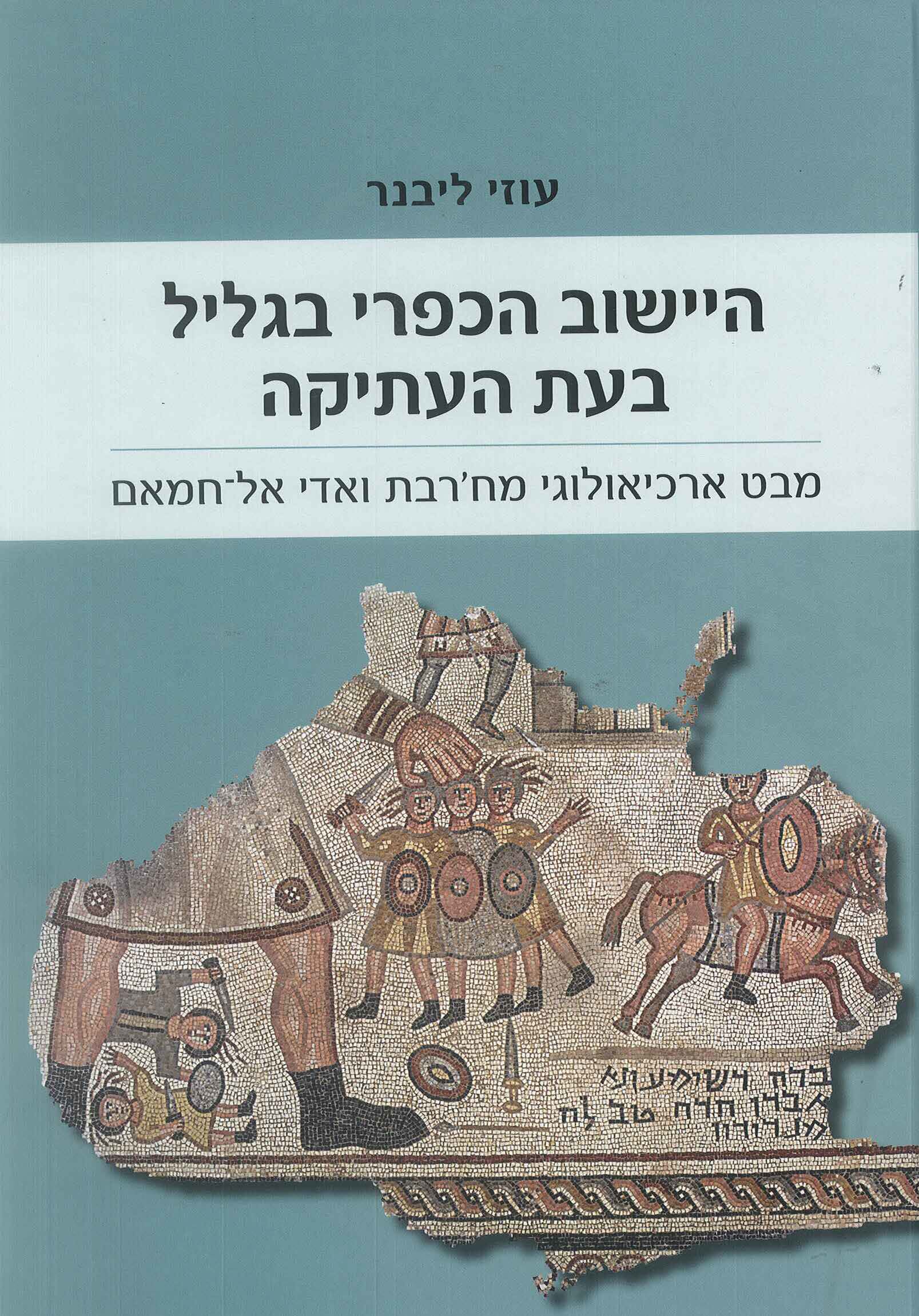
היישוב הכפרי בגליל בעת העתיקה: מבט ארכיאולוגי מח'רבת ואדי אל-חמאם
עוזי ליבנר
2024
במוצא נחל ארבל, באתר עוצר נשימה ממנו נשקפים הכנרת ומצוקי הארבל, ממוקמים שרידיו של כפר גדול מן התקופה הרומית – ח'רבת ואדי אל-חמאם. בשנים 2012-2007 נערכו באתר חפירות נרחבות בידי משלחת מן המכון לארכיאולוגיה באוניברסיטה העברית, במטרה לשפוך אור על שאלות הנוגעות לחיים בכפרי הגליל בעת העתיקה. במוקד החפירה עמדה חשיפת בית כנסת מן הטיפוס ה'גלילי'' ומחקר אדריכלי ואומנותי של שרידיו ושל רצפת הפסיפס המרהיבה שהתגלתה בו. ברחבי האתר נחפרו גם בתי מגורים רבים, סמטאות ומתקנים חקלאיים. בראש הר ניתאי שמעל הכפר נחפרו שרידיו של ביצור אימתני, ובמצוקיו נסקרו מערות מפלט רבות. הממצאים העשירים העלו כי קורותיו של הכפר מקפלים בתוכם חלק ניכר מתולדות ההתיישבות היהודית הכפרית בגליל בימי הבית השני, ובתקופת המשנה והתלמוד.
בספר מוצגים פירות החפירה הארכיאולוגית באתר ותרומתם למחקר של סוגיות מרכזיות בתולדות ההתיישבות הכפרית בגליל בעת העתיקה ולאורח החיים של תושביו: מתי וכיצד התפתח היישוב היהודי בגליל בימי הבית השני ומניין הגיעו תושביו? עד כמה היו תושבי הגליל מעורבים במרד הגדול ובמרד בר כוכבא וכיצד השפיעו תוצאות המרידות הללו על ההתיישבות באזור? מה היה מבנה המשפחה הטיפוסי בכפרים בעת העתיקה וכיצד אפשר ללמוד זאת משרידי בתי המגורים? על מה התבססה כלכלת האוכלוסייה וכיצד עלה בידי תושבי הכפרים לממן הקמת בתי כנסת מפוארים? מתי החלו להיבנות בתי כנסת בכפרי הגליל ומה בין בתי הכנסת של ימי הבית השני לאלו של תקופת המשנה והתלמוד? מה אפשר ללמוד מאומנות בתי הכנסת ומן התרבות החומרית היום-יומית על עולמם הרוחני של תושבי הכפרים?
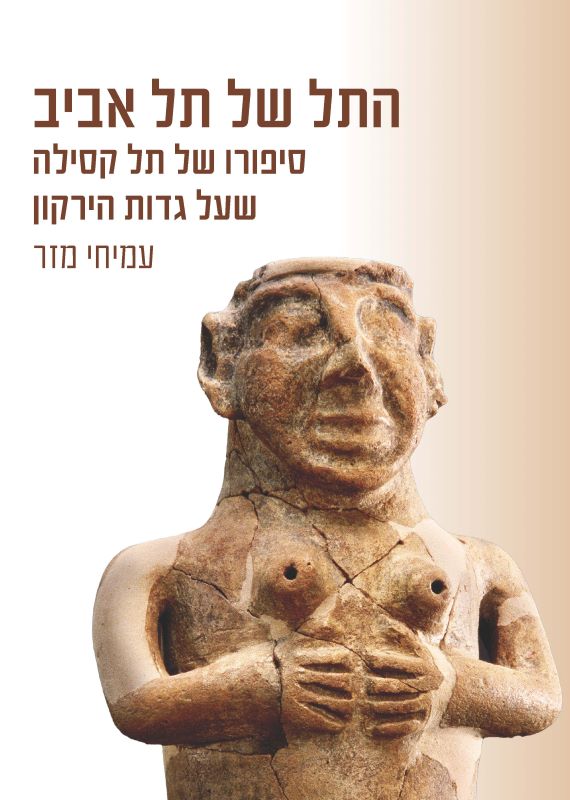
התל של תל אביב: סיפורו של תל קסילה שעל גדות הירקון
עמיחי מזר
2023
ספר זה מציג את התגליות הייחודיות בתל קסילה, הנמצא על גדתו הצפונית של הירקון, כיום בשטח מוזיאון ארץ-ישראל בתל אביב. לאתר יש מקום מיוחד בתולדות המחקר הארכיאולוגי של ארץ-ישראל – בהנהלתו של בנימין מזר נעשו בו החפירות הארכיאולוגיות הראשונות במדינת ישראל. התקופה החשובה בתולדות היישוב בתל קסילה היא תקופת הברזל א (המאה השתיים עשרה – האחת עשרה לפסה"נ), שאז נוסד יישוב במקום, ככל הנראה ביוזמה פלשתית. זו הייתה תקופת השיא בהתיישבות הפלשתית בפלשת, והיישוב בתל קסילה נועד כנראה לשמש יישוב נמל לסחר ימי לאורך חופי הים התיכון. במקום ישבה אוכלוסייה מעורבת, פלשתים לצד כנענים.
החיבור שלפנינו מתאר את הרקע להתיישבות הפלשתית בארץ, את המפגש של הפלשתים עם האוכלוסייה המקומית ואת אופייה של התרבות החומרית שנוצרה עקב מפגש זה. פרק עיקרי בספר מציג את העיר בתל קסילה במאה השתיים עשרה – האחת עשרה לפסה"נ, עיר שהיה בה מבחר יוצא דופן של בתי מגורים, בנייני מנהל ושלושה מקדשים שנמצאו זה מעל זה ובתוכם אוסף עשיר של כלי פולחן נדירים וייחודיים. כמו כן הספר דן במקורות ההשפעה ובקשרים התרבותיים הבאים לידי ביטוי בתגליות אלו, בצדדים אחרים של התרבות החומרית בתקופת הברזל א ובאירוע החורבן המרעיש של היישוב בסביבות שנת אלף לפסה"נ. פרק אחר דן בשיקום היישוב לאחר חורבנו. היישוב שוקם חלקית במאה העשירית-התשיעית לפסה"נ, בתקופת ראשית המלוכה בישראל, אך ספק אם אוכלס בישראלים. הפרקים שלאחר מכן עוסקים בשרידים משלהי תקופת הברזל ועד לתקופה הצלבנית. בכל אחת מהתקופות הללו התגלה ממצא ייחודי: בין השאר נחשפו בניין מנהל או בית אחוזה ובאר ריבועית מן התקופה הפרסית; מבנה שוק יוצא דופן מן התקופה הרומית המאוחרת; בית כנסת עם כתובת שומרונית מן התקופה הביזנטית; חאן מן התקופה המוסלמית הקדומה ושרידי תעשיית הסוכר מן התקופה הצלבנית.
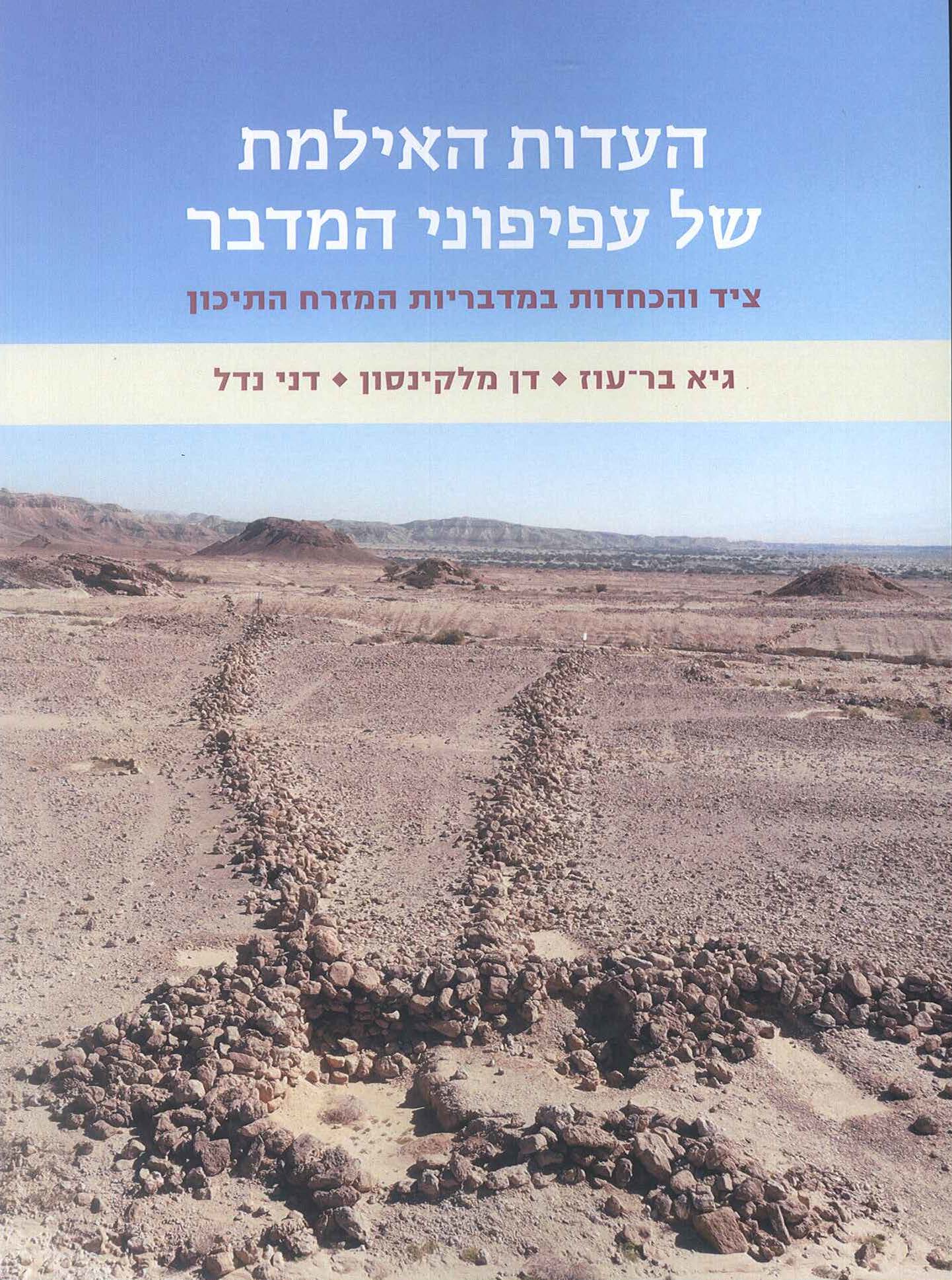
העדות האילמת של עפיפוני המדבר: ציד והכחדות במדבריות המזרח התיכון
גיא בר-עוז, דן מלקינסון ודני נדל
2024
מבט ממעוף הציפור על מדבריות המזרח התיכון מגלה אלפי מבני אבן ענקיים. לכל מבנה מאפיינים ייחודיים, אך לכולם רציונל תכנוני דומה. הם בנויים בדרך כלל מקירות ארוכים בצורת משפך מוארך, המתכנסים למתקן דמוי מכלאה, ובשוליו מספר תאים קטנים. מבנים אלו, הנראים היטב מן האוויר, מכונים 'עפיפוני מדבר'. הם שימשו במשך אלפי שנים מלכודות לציד המוני של עדרי חיות בר. יותר ממאה שנים חלפו מאז שתוארו העפיפונים לראשונה, וכיום ההבנה שלהם מתבססת על חקר ההיסטוריה של תרבויות עתיקות שנעלמו מן העולם, על עדויות ותצפיות של חוקרי טבע ומגלי ארצות, ובעיקר על מחקרים ארכיאולוגיים של אתרים שנותרו חשופים במשך דורות על אדמת המדבר.
בספר זה מתוארים לראשונה עפיפוני המדבר של המזרח התיכון בכלל ועפיפוני הנגב וסיני בפרט, אשר כמעט אינם מוכרים לקהל הרחב. אנו מבקשים למלא את החסר על ידי הצגת המסגרת ההיסטורית-תרבותית, הזואולוגית, האקולוגית והגיאוגרפית של העפיפונים. מתקני הציד העתיקים ועדותם האילמת מתוארים בהרחבה, משום שהם משקפים פרקים מרכזיים ביחסים בין האדם לסביבה המדברית. נוסף על כך, אנו מציעים מבט מקיף על מלכודות ציד במערב אסיה ובמרכזה, בצפון אפריקה, באפריקה הדרומית ובצפון אמריקה. אנו מתארים את אופי המלכודות ואת המינים שניצודו בהן כמו ביזונים, איילים, פראים, צבאים ואנטילופות ומציגים ממצאים ארכיאולוגיים, חרותות סלע ועדויות אתנוגרפיות שבעזרתן שוחזרו טכנולוגיות הציד ומשוחזרת גם ההשפעה ההרסנית שהייתה למלכודות על עדרי חיות הבר.
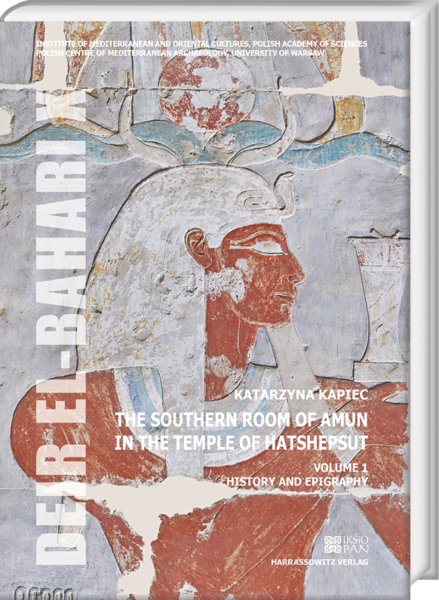
The Southern Room of Amun in the Temple of Hatshepsut
Volume 1: History and Epigraphy
Katarzyna Kapiec
2023
The publication is the first volume of the studies devoted to the Southern Room of Amun in the temple of Hatshepsut at Deir el-Bahari. An overview of research conducted in the Southern Room of Amun and its surroundings is given in the first chapters. A detailed description of the decoration constitutes the main part of the book. The presentation of each wall is constructed according to the following order: state of preservation, polychromy, description of the figures, texts (transcription, transliteration, and translation) given in the altered versions with comments often including the reconstruction of the original layout of the inscriptions from the reign of Hatshepsut. Such an approach was particularly useful in illustrating the changes performed during the reign of Thutmose III and Amarna period as well as the post-Amarna reconstructions. Therefore, the study not only serves to identify the function of the discussed room but also to shed light on Hatshepsut's times and relevant elements of religion exposed during her reign and after (to be published in a second volume).
The documentation and epigraphic studies prepared over the years proved the need of including a chapter discussing the erasures and re-carvings in the decoration during the sole reign of Thutmose III and clarifying the knowledge about the chronology of the relief works carried out in this room.
In addition, this volume includes an appendix written by Izabela Uchman on multidisciplinary conservation and restoration works undertaken in the studied room.

Colonial Archaeology in Palestine in the 1930s: the First Expedition to Lachish
Yosef Garfinkel
2024
Colonial Archaeology in Palestine in the 1930s: The First Expedition to Lachish This book presents a biography of the First Expedition to Lachish, one of the most famous archaeological expeditions to the Near East. It was directed by James Lesley Starkey, who was murdered on 10 January 1938 on his way to Jerusalem. Lachish is of outstanding historical and biblical importance and the expedition made unique discoveries, including the Lachish Letters, documents from the time of the prophet Jeremiah. The excavation results were fully published in four large volumes of outstanding quality, thanks to Olga Tufnell. The expedition, which was sponsored by some of the richest people in England, reflects the social order of its time, as well as the local situation in Palestine before and during the Arab revolt. The book publishes primary historical sources: 68 biweekly reports sent from Palestine to London during the years 1932–1938, and 112 other relevant documents.

